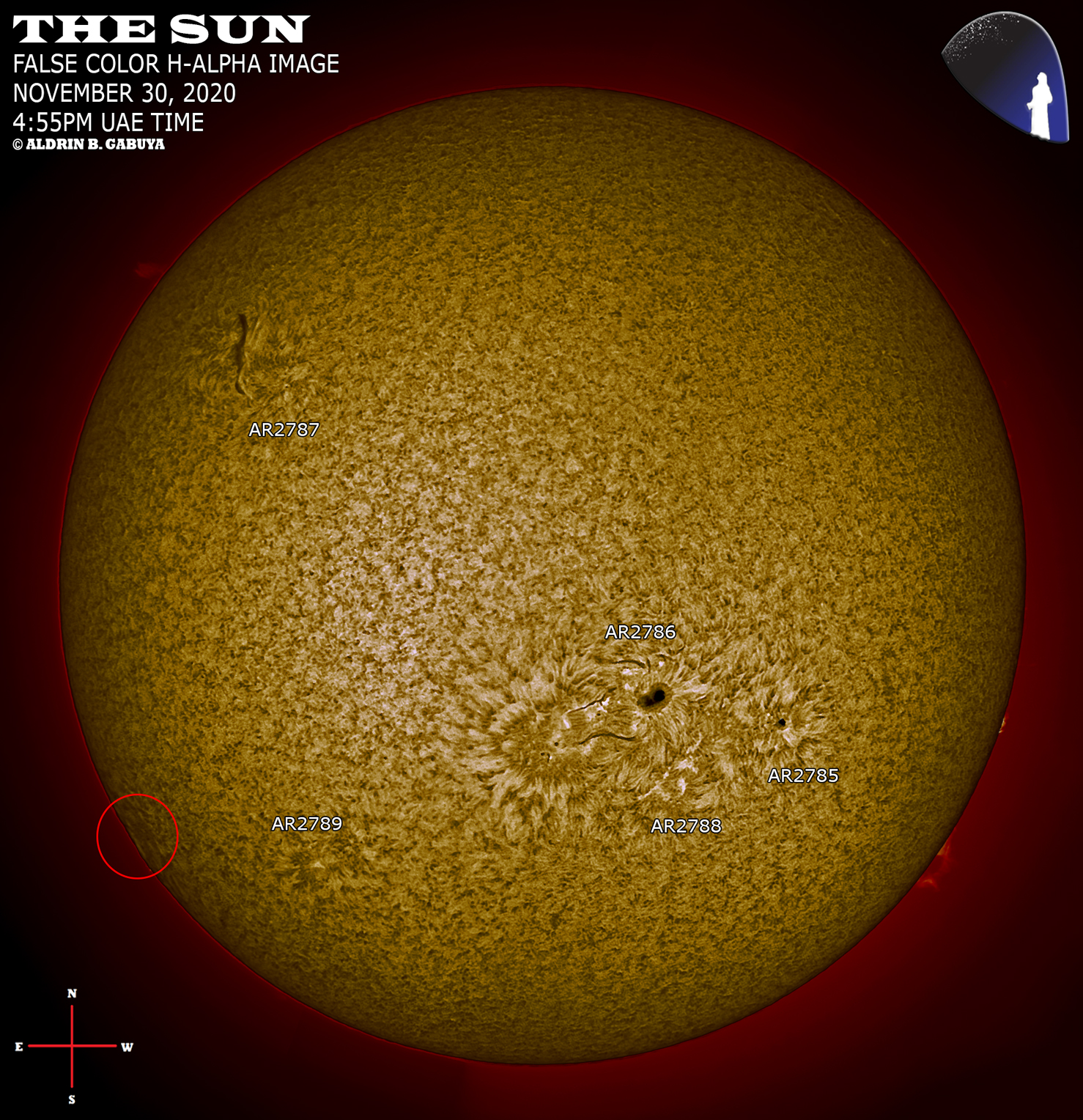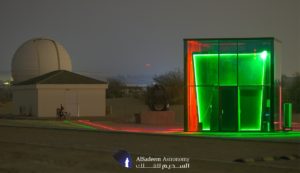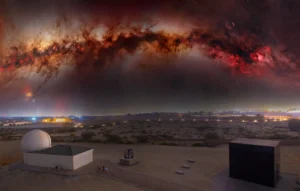Here are today’s solar images taken from Al Sadeem Observatory, November 30, 2020.
The sky was generally clear with intermittent light to moderate breeze which provided average transparency and seeing at the time these images were taken.
AR2786 (Fki/beta-gamma) has maintained its gigantic sunspot structure, (coverage area of about 200,000km across) and still crackling with some minor B-class and C-class flaring activities.
A new huge sunspot group is about to rotate into Earth-view from the southeastern limb (encircled) and will be designated in the few days once a better view is attained. This is the source of a major moderately strong M4.4-class solar flare followed by a non-Earth directed coronal mass ejection (CME) which was recorded by space weather agencies yesterday evening, November 29, 2020.
The latest sunspot number (based on visual count and Wolf number calculation) is 89. Other solar features observed were faint moderately huge eruptive prominences at the northeastern and southwestern limbs, some on-going magnetic enhancement/solar flaring activities within AR2786, and few elongated eruptive prominences in AR2786 and AR2787 as distinctively captured in H-alpha imagery.
Space weather agencies* forecast gradual increase in solar activity with chances of solar flares of C-class (possibly up to isolated M-class) intensity, mainly from AR2786 and the new sunspot region. Close monitoring is being conducted by numerous space weather agencies for any significant development.
Equipment used are Skywatcher 120mm refractor telescope with Baader filter and unmodified Canon EOS 1D Mark IV DSLR camera for visible imagery. For H-alpha imagery, the equipment used are Lunt 60mm H-alpha solar telescope, and QHYCCD 290III mono camera; all mounted on Skywatcher EQ6 pro mount Pre-processing of visible solar images was performed in PIPP, stacking in Autostakkert, slight wavelet adjustments in Registax 6, and post-processing in Adobe Photoshop CC.
*TECHNICAL REPORTS COURTESY OF SOLAR INFLUENCE DATA CENTER (SIDC), NOAA-SPACE WEATHER PREDICTION CENTER (NOAA-SWPC)
Weather Data (4:30 PM – 5:00 PM, November 30, 2020, from NCM Al Wathba Station):
Average Temperature: 28.03°C
Average Humidity: 39.33 %
Average Wind Speed and Direction: 14.9 kph from N
Average Cloud Cover: 5%
Average Air Pressure: 1005.47 hPa
Average Solar Radiation: 85.33 W/m^2













